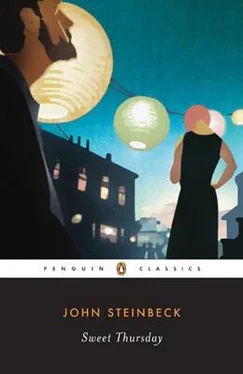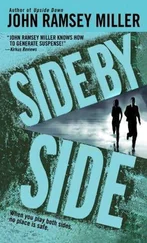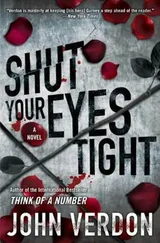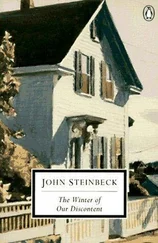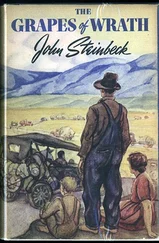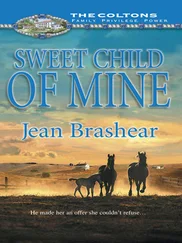John Steinbeck - Sweet Thursday
Здесь есть возможность читать онлайн «John Steinbeck - Sweet Thursday» весь текст электронной книги совершенно бесплатно (целиком полную версию без сокращений). В некоторых случаях можно слушать аудио, скачать через торрент в формате fb2 и присутствует краткое содержание. Год выпуска: 2008, ISBN: 2008, Издательство: Penguin Classics, Жанр: Классическая проза, на английском языке. Описание произведения, (предисловие) а так же отзывы посетителей доступны на портале библиотеки ЛибКат.
- Название:Sweet Thursday
- Автор:
- Издательство:Penguin Classics
- Жанр:
- Год:2008
- ISBN:1-4362-4126-X
- Рейтинг книги:5 / 5. Голосов: 1
-
Избранное:Добавить в избранное
- Отзывы:
-
Ваша оценка:
- 100
- 1
- 2
- 3
- 4
- 5
Sweet Thursday: краткое содержание, описание и аннотация
Предлагаем к чтению аннотацию, описание, краткое содержание или предисловие (зависит от того, что написал сам автор книги «Sweet Thursday»). Если вы не нашли необходимую информацию о книге — напишите в комментариях, мы постараемся отыскать её.
Cannery Row
Sweet Thursday — читать онлайн бесплатно полную книгу (весь текст) целиком
Ниже представлен текст книги, разбитый по страницам. Система сохранения места последней прочитанной страницы, позволяет с удобством читать онлайн бесплатно книгу «Sweet Thursday», без необходимости каждый раз заново искать на чём Вы остановились. Поставьте закладку, и сможете в любой момент перейти на страницу, на которой закончили чтение.
Интервал:
Закладка:
Yes, the war got into everybody. Doc [7] Doc: Marine biologist, pioneering ecologist, and intellectual polymath Edward Flanders Robb Ricketts (1887–1948) was the model for Steinbeck’s fictional Doc. Steinbeck’s portrayal of Doc is often biographically accurate regarding Ricketts’s physical gestures and appearance, his personal habits and tastes, and his cultural interests (especially in music, literature, and philosophy). Steinbeck embroiders, too: Ricketts attended the University of Chicago (1919–22) but never graduated, whereas his fictional counterpart holds a PhD from that institution. The research award Doc receives from Old Jingleballicks in chapter 37 may have been compensation for Ricketts’s failure at winning a Guggenheim Fellowship in 1947. On the other side, in order to emphasize Doc’s romantic adventures, Steinbeck ignores Ricketts’s role as a husband and a father to three children from his marriage to Anna “Nan” Maker in 1922. (The couple later separated but were never legally divorced.) “Half-Christ and half-goat,” Steinbeck summed him up in his 1951 elegy “About Ed Ricketts,” itself an exercise in paradox, selective memory, and impressionism. Steinbeck’s eighteen-year relationship with Ricketts was profoundly beneficial, as Richard Astro established in John Steinbeck and Edward F. Ricketts (1973). Besides their collaborative book, Sea of Cortez (1941), Steinbeck drew on Ricketts’s ideas so deeply and so often that after Ricketts’s death in May 1948, Steinbeck told mutual friends in Steinbeck: A Life in Letters (1976): “Wouldn’t it be interesting if Ed was us. And that now there wasn’t any such thing or that he created out of his own mind something that went away with him. I’ve wondered a lot about that. How much was Ed and how much was me and which was which” (p. 316). Excellent resources with which to survey the world of Ed Ricketts are Katharine A. Rodger’s Renaissance Man of Cannery Row (2002) and her Breaking Through (2006), as well as Eric Enno Tamm’s Beyond the Outer Shores (2004).
was drafted. He put a friend known as Old Jingleballicks [8] Old Jingleballicks: Eccentric Old Jay’s prototype has never been positively identified by scholars, though it is possible he was in some way connected with Stanford’s Hopkins Marine Station, perhaps its onetime director W. K. Fisher, who was initially critical of the quality and nature of Ricketts’s scientific work. In “About Ed Ricketts” (1951), Steinbeck says only that Ricketts “hated one professor whom he referred to as ‘old jingleballicks.’ It never developed why he hated ‘old jingleballicks’ ” (p. xviii).
in charge of Western Biological Laboratories [9] Western Biological Laboratories: Doc’s business was modeled on Edward F. Ricketts’s Pacific Biological Laboratories, cofounded in 1923 in Pacific Grove with Albert Galigher (his former University of Chicago roommate). In the late 1920s, Ricketts, by then the lab’s sole owner, moved the business to 740 Ocean View Avenue in Monterey. Later, the street was renumbered, then renamed, with Ricketts’s lab becoming 800 Cannery Row. The building, now a private social club, still stands. Recently it received a California Governor’s Historic Preservation Award.
and served out his time as a tech sergeant in a V.D. section.
Doc was philosophical about it. He whiled away his free hours with an unlimited supply of government alcohol, made many friends, and resisted promotion. When the war was over, Doc was kept on by a grateful government to straighten out certain inventory problems, a job he was fitted for since he had contributed largely to the muck-up. Doc was honorably discharged two years after our victory. [10] our victory: Victories by Allied forces over Germany and Japan that ended World War II took place in May and August 1945.
He went back to Western Biological and forced open the water-logged door. Old Jingleballicks hadn’t been there for years. Dust and mildew covered everything. There were dirty pots and pans in the sink. Instruments were rusted. The live-animal cages were empty.
Doc sat down in his old chair and a weight descended on him. He cursed Old Jingleballicks, savoring his quiet poisonous words, and then automatically he got up and walked across the silent street to Lee Chong’s grocery for beer. A well-dressed man of Mexican appearance stood behind the counter, and only then did Doc remember that Lee Chong was gone.
“Beer,” said Doc. “Two quarts.”
“Coming up,” said the Patrón.
“Is Mack around?”
“Sure. I guess so.”
“Tell him I want to see him.”
“Tell him who wants to see him?”
“Tell him Doc is back.”
“Okay, Doc,” said the Patrón. “This kind of beer all right?”
“Any kind of beer’s all right,” said Doc.
Doc and Mack sat late together in the laboratory. The beer lost its edge and a quart of Old Tennis Shoes took its place while Mack filled in the lost years.
Change was everywhere. People were gone, or changed, and that was almost like being gone. Names were mentioned sadly, even the names of the living. Gay was dead, killed by a piece of anti-aircraft fallback in London. He couldn’t keep his nose out of the sky during a bombing. His wife easily remarried on his insurance, but at the Palace Flop house [11] Palace Flop house: A shed, once owned by Horace Abbeville and used to store fish meal, that figures prominently in Cannery Row (1945). The Palace Flop house was deeded to Chinese merchant Lee Chong as payment for a grocery debt.
they kept Gay’s bed just as it was, before he went—a little shrine to Gay. No one was permitted to sit on Gay’s bed.
And Mack told Doc how Whitey No. 1 took a job in a war plant in Oakland and broke his leg the second day and spent three months in luxury. In his white hospital bed he learned to play rhythm harmonica, an accomplishment he enjoyed all the rest of his life.
Then there was the new Whitey, Whitey No. 2, and Mack was proud of him, for Whitey No. 2 had joined First Marines and gone out as a replacement. Someone, not Whitey No. 2, said he had won a Bronze Star, but if he had he’d lost it, so there was no proof. But he never forgave the Marine Corps for taking his prize away from him—a quart jar of ears pickled in brandy. He’d wanted to put that jar on the shelf over his bed, a memento of his service to his country.
Eddie had stayed on his job with Wide Ida at the Café La Ida. The medical examiner, when he looked at his check sheet and saw what was wrong with Eddie, came to the conclusion that Eddie had been technically dead for twelve years. But Eddie got around just the same, and what with the draft taking everybody away he very nearly became a permanent bartender for Wide Ida. Out of sentiment he emptied the wining jug into a series of little kegs, and when each keg was full he bunged it and buried it. Right now the Palace is the best-endowed flop house in Monterey County.
Down about the middle of the first quart of Old Tennis Shoes, Mack told how Dora Flood had died in her sleep, leaving the Bear Flag bereft. Her girls were brokenhearted. They put on a lady-drunk that lasted three days, stuck a “Not Open for Business” sign on the door, but through the walls you could hear them doing honor to Dora in three-part harmony—“Rock of Ages,” “Asleep in the Deep,” and “St. James Infirmary.” [12] “Rock of Ages…St. James Infirmary”: “Rock of Ages” (1776) written by Augustus M. Toplady; “Asleep in the Deep” (1897) written by Arthur J. Lamb, with melody by Henry W. Petrie; “St. James Infirmary,” a folk song of indeterminate authorship, was recorded by many artists, including Louis Armstrong in 1928.
Those girls really mourned—they mourned like coyotes.
Интервал:
Закладка:
Похожие книги на «Sweet Thursday»
Представляем Вашему вниманию похожие книги на «Sweet Thursday» списком для выбора. Мы отобрали схожую по названию и смыслу литературу в надежде предоставить читателям больше вариантов отыскать новые, интересные, ещё непрочитанные произведения.
Обсуждение, отзывы о книге «Sweet Thursday» и просто собственные мнения читателей. Оставьте ваши комментарии, напишите, что Вы думаете о произведении, его смысле или главных героях. Укажите что конкретно понравилось, а что нет, и почему Вы так считаете.
